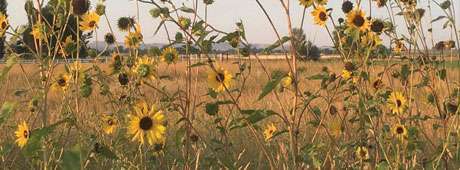No products in the cart.
Kimberly–Spotlight

Where “the Kimberly Way” Prevails
Story and Photos by Julie Underwood
It’s five in the morning, the sun has not quite reached the horizon, and the air is crisp. I’m at the bean warehouse on Main Street in Kimberly, climbing into the back of an old pickup that belongs to Sherry, the crew boss. Our crew consists of eight girls who are thirteen to fifteen years old, all of us daughters of warehouse staff—two are Sherry’s kids. Once we’re loaded up, everyone hunkers down under wool blankets and sleeping bags we’ve brought along for the thirty-five-minute ride to Paul. Southern central Idaho has a high-desert climate, so even at daybreak in July, the temperature is a mere fifty degrees. Add in the wind chill when traveling 55 m.p.h. down I-84 and it’s cold. Even so, I feel lucky to have a job that actually pays me minimum wage (a whopping $2.90 per hour in 1978) when I’m not yet at the legal working age of fourteen.
After the invigorating ride to the field, we are instructed to identify which beans are “rogues” in any particular field. For example, in a field of Blue Lakes green beans, which grow as bushy plants low to the ground, Sherry points out runner bean plants that don’t belong. By pulling the rogue beans from the field, we effectively create a purified crop that can then be used for seed beans the next year. We work until the afternoon sun makes it too hot to continue. As the morning dew evaporates off the fields, the humidity climbs to ninety percent by early afternoon, which makes quitting time 2 p.m. most days—even earlier when temperatures rise into the mid-nineties.
Seeing the Kimberly water tower alerts us that we are almost home, and I’m very relieved to thump across the railroad tracks, which then were just on the other side of the bean house. Kimberly was, and still is, a very small town. It consists of two main thoroughfares, Main Street and Center Street.
This content is available for purchase. Please select from available options.
Register & Purchase Purchase Only
Register & Purchase Purchase Only

